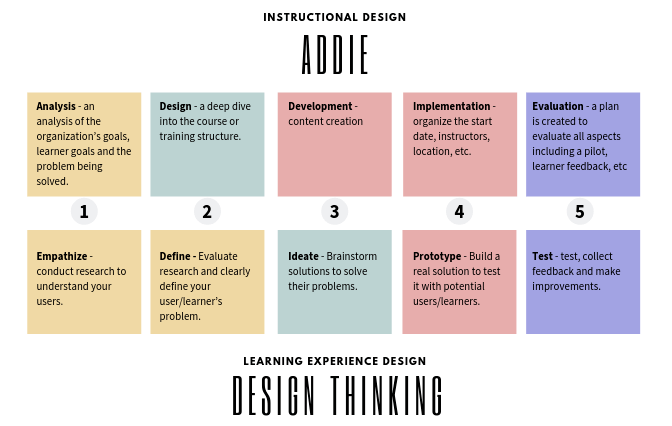UDL Universal Design for Learning
https://www.facebook.com/groups/onlinelearningcollective/permalink/631309057499796/
++++++++++++++
more on UDL in this IMS blog
https://blog.stcloudstate.edu/ims?s=udl
Digital Literacy for St. Cloud State University
https://www.facebook.com/groups/onlinelearningcollective/permalink/631309057499796/
++++++++++++++
more on UDL in this IMS blog
https://blog.stcloudstate.edu/ims?s=udl
I was beginning to think Foucault’s writings on the “disciplinary society” were becoming irrelevant. But then my niece started the 5th grade. Her teachers add and subtract behavioral points in an app shared with her mom. Note that she lost a point for using the restroom today. pic.twitter.com/3nXJ9Mdbyo
— Josh Seim (@JoshSeim) September 27, 2019
Don’t just have students focus on *what* they should be learning, but also *how.*
Great video from @edutopia to explain what that looks like: pic.twitter.com/iP3TAbh4Ez
— FourPoint Education Partners (@FourPoint_Ed) August 27, 2019
+++++++++
more on metacognition in this IMS blog
https://blog.stcloudstate.edu/ims?s=metacognition
Goldie Blumenstyk, called it the “embedded for-profit university” because there’s all these different for-profits operations within a nonprofit higher-ed institution.
One of the MOOC founders who said five years later, well MOOCs have failed as an educational experiment. And my comment to that was, they never were an educational experiment.
Anya Kamenetz called “DIY U” people cobbling together an education from various sources
And we are in a world of multiple new models. The work I’ve done in the last 20 years in online or technologically enhanced learning suggests that fewer than 10 percent of the people who are learners are able to self-direct—or really more like 4 percent.
A call for more inter-campus networking on learning design:https://t.co/9GIxMdtswE
— Bryan Alexander (@BryanAlexander) June 26, 2019
a new interdisciplinary field of learning innovation emerging.
Learning innovation, as conceptualized as an interdisciplinary field, attempts to claim a space at the intersection of design, technology, learning science and analytics — all in the unique context of higher education.
professional associations, such as POD, ELI, UPCEA, (https://upcea.edu/) OLC (https://onlinelearningconsortium.org/), ASU GSV (https://www.asugsvsummit.com/) and SXSW Edu (https://www.sxswedu.com/) — among many other conferences and events put on by professional associations.
A professional community of practice differs from that of an interdisciplinary academic network. Professional communities of practice are connected through shared professional goals. Where best practices and shared experiences form the basis of membership in professional associations, academic networks are situated within marketplaces for ideas. Academic networks run on the generation of new ideas and scholarly exchange. These two network models are different.
+++++++++++
https://elearningindustry.com/learning-experience-design-instructional-design-difference
“Learning Experience Design™ is a synthesis of Instructional Design, educational pedagogy, neuroscience, social sciences, design thinking, and User Experience Design.”

++++++++++++++
more on LX design in this iMS blog
https://blog.stcloudstate.edu/ims?s=learning+design
for the past 21 years its organizer, the Oakland, Calif.-based nonprofit known as NewSchools Venture Fund, has also put millions of dollars into novel schools in public districts
Charter schools operate with public funding, and sometimes philanthropic support, but are managed by an outside organization that is independent from local district oversight. In California, they are run by nonprofit organizations with self-elected boards. (For-profit charters are outlawed.)
Their supporters and operators—who make up the vast majority of the 1,300-plus attendees at this year’s Summit—say the model offers the flexibility needed to introduce, test and adopt new curriculum, tools and pedagogical approaches that could better serve students, particularly in low-income and minority communities.
Rocketship Education was an early showcase for blended learning, where students rotate between working on computers and in small groups with teachers. Summit Public Schools, a network of charters that now claims a nationwide footprint, promotes project-based learning assisted by an online learning platform.
But charters have also attracted an increasingly vocal opposition, who charge them with funneling students, teachers and funds from traditional district schools. Aside from raising teacher salaries, a sticking point in the recent California teachers’ strikes in Los Angeles and Oakland has been stopping the growth of charter schools.
Detractors can point to fully-virtual charters, run by for-profit companies, that have been fined for misleading claims and graduating students at rates far below those at traditional schools. At the same time, research suggests that students attending charter schools in urban regions outperform their peers in traditional school settings.
While the first decade of this century saw double-digit percentage increase in the number of such schools, it has almost entirely plateaued (at 1 percent growth) in the 2017-2018 school year, according to data from the National Alliance for Public Charter Schools.
++++++++++++
more on charter schools in this IMS blog
https://blog.stcloudstate.edu/ims?s=charter
KEVIN MAHNKEN | January 7, 2019
Elected School Board Members Are Most Likely to Be White, Wealthy & Republican, New Study Finds
“”””””””””””
more on principalship in this IMS blog
https://blog.stcloudstate.edu/ims?s=principal
per Gail Ruhland